This last weekend was miserable. All week, it had been sunny and warm, nearly 90° on a couple of days, and then the weekend arrives. So do the clouds. A solid blanket of clouds that lasted all weekend (though they were miraculously gone this morning when I had to go back to work.) And the temperature dropped 25-30°, so the daytime high was only around 60° – unseasonable chilly for this late in May.
I had planned to head north to Potosi and the Big River looking for Orconectes harrisoni and Cambarus maculatus, but the ugly weather combined with the heavy thunderstorms that had hit that drainage Friday night kept me from making the trip. I knew that the river had come up some two feet on the gauge, crested and was receding, but I had no way of knowing if it had cleared enough for my purposes. And under those circumstances, I wasn’t willing to drive two hours in the hopes of finding water clear enough for photography.
So I “settled” for a trip to the upper Jacks Fork instead. It’s only about 45 minutes from the house and I have a reliable source for obtaining river conditions, including clarity. I wasn’t looking for anything in particular except maybe to get a few more photos of O. ozarkae and to just get the heck out of the house. I stopped at Bachers and Baptizing Hole (both are between Blue Spring and Jam-Up Cave) and just spent some time wading along the edge of the gravel bars, turning rocks, since it was chilly enough that I couldn’t talk myself into going into the water, even with the wetsuit.
Still, I did make a couple of interesting finds.
First was a Form I (capable of reproduction) (it was actually Form II – see Emily’s comment at the bottom) O. luteus – nothing special to be sure, but I actually got decent photos of the gonopods, something that I’ve not managed to do very often for some reason.
|
|
|
|
|
O. luteus form II male. |
At Baptizing Hole, I uncovered two female O. luteus carrying eggs. Pflieger stated in Crayfish of Missouri that their eggs were bright yellow (I just rechecked and he says they’re black,) but these obviously aren’t and I can’t account for the color difference.
At Bachers, a mile downsteam, I found two other females carrying young. The young stay with the female until they’ve completed two molts and then disperse.
I caught and examined several O. ozarkae females, but none had eggs or young.
I only caught one O. punctimanus, a form II male that I didn’t photograph, and I didn’t find a single C. hubbsi, so I don’t know if either of those species are currently bearing eggs/young or not.
Not bad stuff for a couple of hours on the river. Plus, I got to spend a couple of hours on the river! 🙂
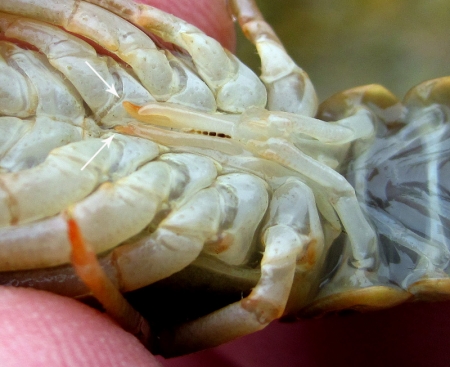
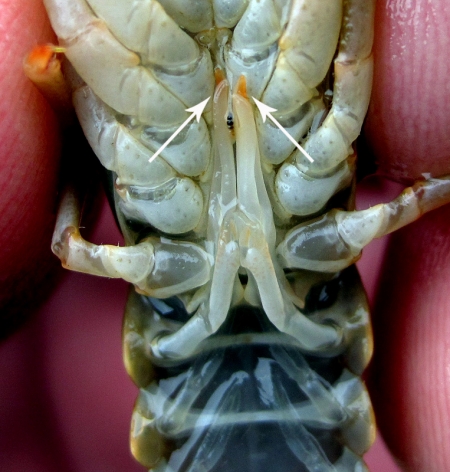
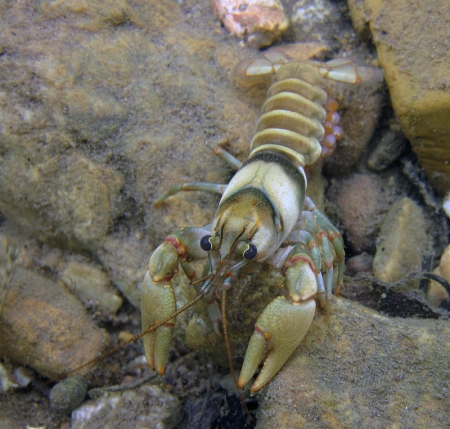
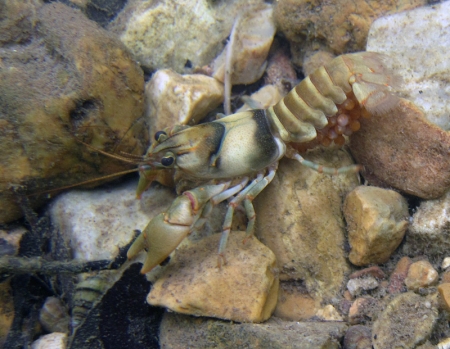
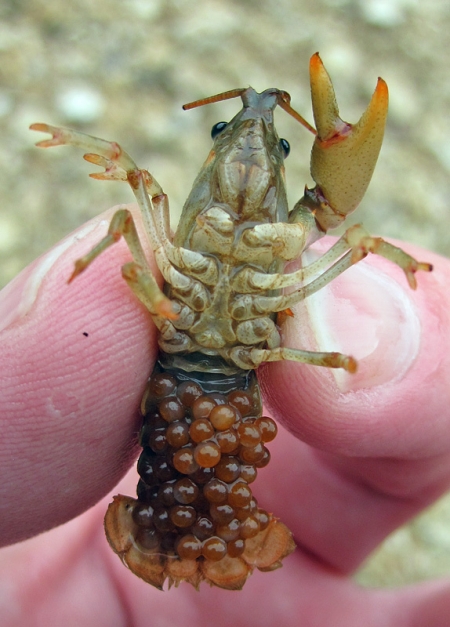
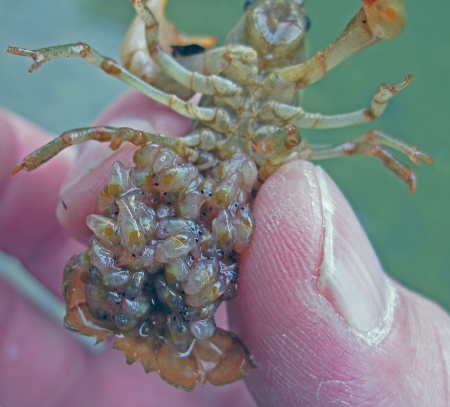
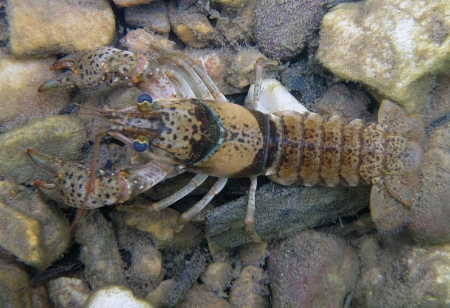
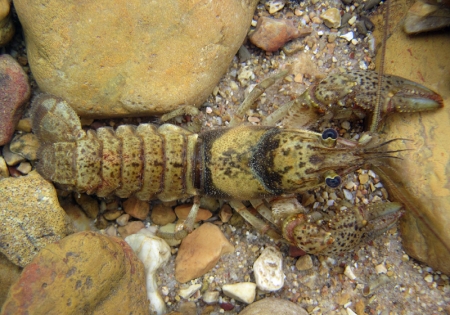
Great, detailed shots of the gonopods and the hatchlings.
However, that is a form II male – the form I has long slender tips, usually white and yellow.
Oops! Thanks for setting me straight, Emily. Figures that I try to illustrate one of the most fundamental aspects of crayfish anatomy and identification and I get it bass ackwards. 🙂
I have to confess that I didn’t actually look at the shape of the gonopods, I just saw the yellow tips and assumed (yes, Mr. Gossett, I know what assuming does and this illustrates your point quite well!) it was form I. Lesson learned. But I didn’t think form II gonopods had any yellow on the tips??
Its a very easy error to make – the difference can be quite subtle. It certainly took me some time to learn. Form II normally does not have yellow on the tips, but they do often have bright orange tips. Rather similar! Form I also has very soft tips, they bend easily when you touch the tip.
Thanks for the clarification, Emily. I was obviously mistaking the orange for yellow, something I should be able to avoid now. But just to make sure I’ve got it, this is orange and a Form II, correct?
At this point, I kind of feel like I should go back to kindergarten (I dropped out after the first day!) and relearn my colors. 🙂
Yep, that is form two!
I wish I had a good photo of a form one, but sadly I don’t think we have any.
Also, this is not a true defining characteristic due to individual variation, but form one males often have larger claws than form two males.